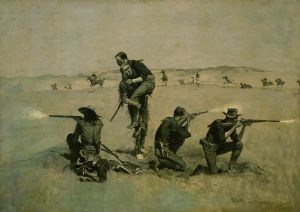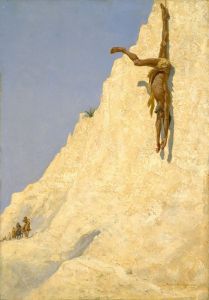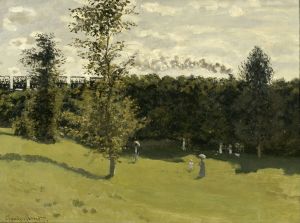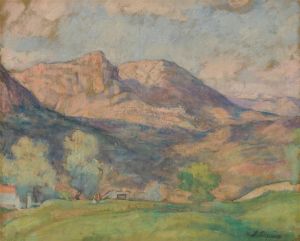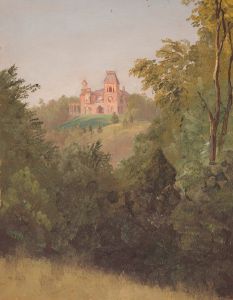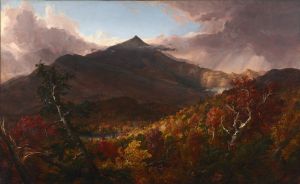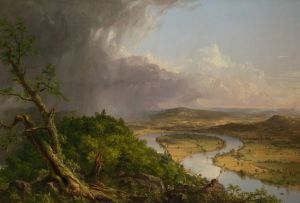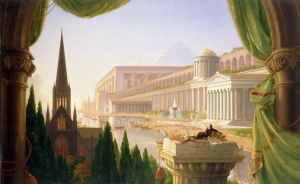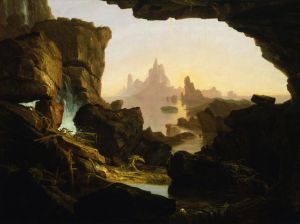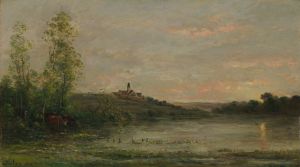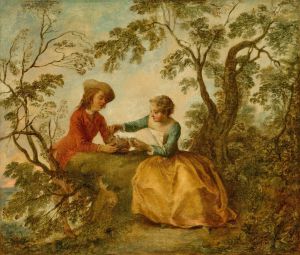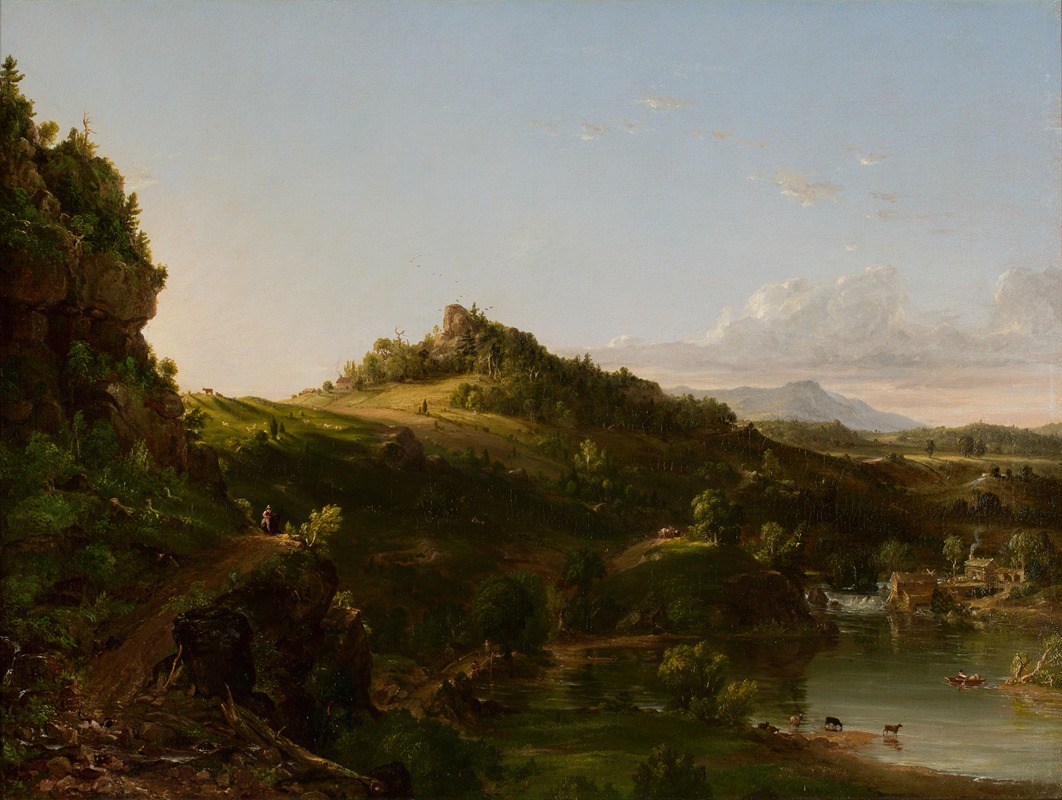
Catskill Scenery
A hand-painted replica of Thomas Cole’s masterpiece Catskill Scenery, meticulously crafted by professional artists to capture the true essence of the original. Each piece is created with museum-quality canvas and rare mineral pigments, carefully painted by experienced artists with delicate brushstrokes and rich, layered colors to perfectly recreate the texture of the original artwork. Unlike machine-printed reproductions, this hand-painted version brings the painting to life, infused with the artist’s emotions and skill in every stroke. Whether for personal collection or home decoration, it instantly elevates the artistic atmosphere of any space.
Catskill Scenery is a painting by the renowned American artist Thomas Cole, who is often considered the founder of the Hudson River School, a mid-19th century American art movement embodied by a group of landscape painters whose aesthetic vision was influenced by romanticism. The exact date of the painting is not definitively known, but it is generally attributed to the early 19th century, around the 1820s or 1830s, a period during which Cole produced many of his significant works.
Thomas Cole was born in 1801 in Bolton-le-Moors, Lancashire, England, and emigrated to the United States with his family in 1818. He initially settled in Ohio but later moved to New York, where he found the landscapes that would inspire much of his work. Cole's fascination with the American wilderness led him to the Catskill Mountains in New York, which became a recurring subject in his paintings.
Catskill Scenery exemplifies Cole's skill in capturing the sublime beauty of the American landscape. The painting features a panoramic view of the Catskill Mountains, characterized by their rugged terrain, dense forests, and dramatic skies. Cole's meticulous attention to detail and his ability to convey the grandeur and majesty of nature are evident in this work. The composition typically includes a foreground with detailed foliage, a middle ground with rolling hills or a body of water, and a distant background of towering mountains, all rendered with a sense of depth and perspective that draws the viewer into the scene.
Cole's work often carried a deeper philosophical and moral message, reflecting his belief in the divine presence in nature and the importance of preserving the natural environment. His paintings frequently juxtaposed the untouched wilderness with subtle signs of human presence, suggesting a balance between nature and civilization. In Catskill Scenery, this might be represented by a small cabin or a figure in the landscape, though such details can vary among his works.
The Hudson River School, which Cole helped to establish, was not a formal institution but rather a loosely associated group of artists who shared a common approach to landscape painting. They were united by their interest in the natural beauty of the American landscape and their desire to capture its essence on canvas. Cole's influence extended to many other artists, including Asher B. Durand and Frederic Edwin Church, who became prominent figures in the movement.
Catskill Scenery remains an important example of Thomas Cole's contribution to American art and the Hudson River School. It reflects his pioneering role in developing a distinctly American style of landscape painting that celebrated the natural beauty of the United States and conveyed a sense of awe and reverence for the natural world. Cole's legacy continues to be celebrated in art history, and his works are held in high regard by museums and collectors alike.





